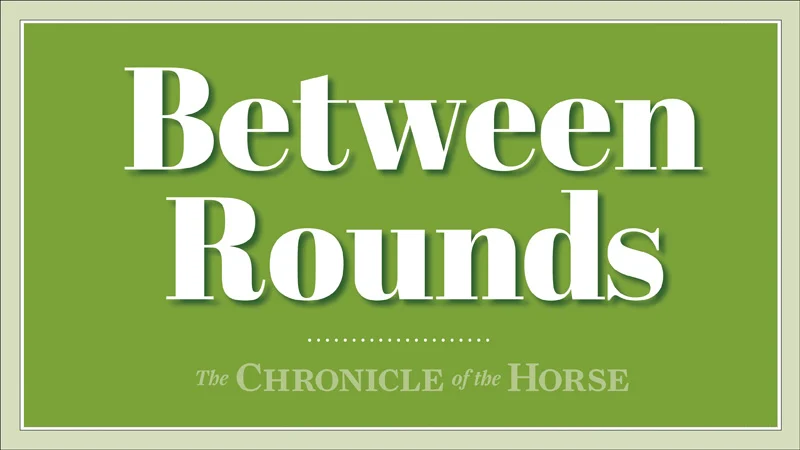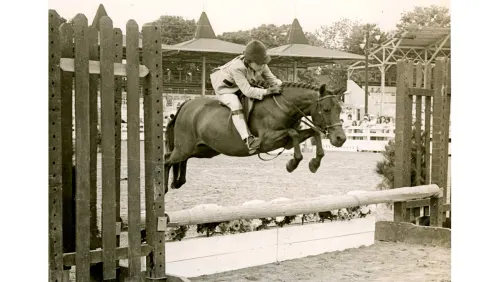The process may seem overwhelming, but it’s not arbitrary.
Every year I used to receive the “white book” from American Horse Shows Association in the mail and be stunned by the number of rule changes that were going to be considered at the convention.
I would just shake my head in bewilderment and wonder where they all came from and why. Just looking at the book would make me think about the mind-numbing meetings during which we would go through them one by one at the AHSA convention.
Fortunately, with the advent of the U.S. Hunter Jumper Association, the rule change process at the now U.S. Equestrian Federation convention became much more streamlined, and I’m certain the representatives of all the other breeds and disciplines were as grateful as the hunter/jumper contingency for this blessing.
Yet the white book remains, and the process still seems mysterious and random to many members. Since becoming involved in governance, I’ve been intrigued to watch the process unfold and realize that it’s not as arbitrary as you might think.
The Proposal Is Born
Let’s examine some rule change proposals that were first brought to everyone’s attention at the 2009 USHJA Convention. During the forum to discuss hunter rule changes, Lori Rawls, USEF executive director, went to the podium to present rule change proposals that the membership had not seen before the meeting. These were significant proposals outlining the nationalization of the specifications for the children’s and adult hunters and jumpers.
This was certainly outside of the normal process. Everyone felt that they’d been blindsided and this type of last-minute proposal was definitely not in the best interest of our sport. The proposals were withdrawn, but the conversation had been started.
In March 2010, the USHJA held its first Zone Chair Retreat, and President Bill Moroney appointed Britt McCormick and Otis Brown (“Brownie”) to co-chair a task force that would gather data, seek to determine if the creation of uniform specifications for children’s and adult sections would be a positive step for the sport and our exhibitors, and develop the rule changes necessary to make this work.
The mission of the task force was even more important because, for the first time, all of the zones had decided to allow points earned in states contiguous to the zone to count for zone Horse Of The Year points. The variation of the specifications between zones for the children’s and adult sections would make points won at shows in states contiguous to a rider’s home zone invalid for zone HOTY points. This would be an unpleasant surprise to the exhibitor and likely be discovered after the horse show.
ADVERTISEMENT
The task force, under the leadership of Brownie and Britt, put together an initial survey and a follow-up survey to try to understand the impact nationalizing these standards would have on the membership and to get a sense if this was viewed as a potentially positive step for the organization to take.
They gathered input, clarified terminology, investigated how current zone specifications impacted a particular section and the effect on exhibitors from neighboring zones, then put together the initial rule change language to form the basis of the discussion. Then the really hard work began.
To quote Britt, “Much like Congress, getting a consensus on a single piece of legislation is difficult at best. The proponents of a Rule Change Proposal must be willing to look at their issue from many different angles, ignore certain uninformed opinions, take well-intentioned opinions to heart and be willing to compromise. A lot of times, especially for us [Britt and Brownie], other people had better ideas than we did. In those cases, we changed our RCP to the better idea.”
Once the originating committee agrees on the language of the rule change, it moves to a review by the USHJA Rules Committee. If they have questions or concerns they can return the rule to the proponent to ask for clarification of the intent or language of the proposal. The Rules Committee will also designate which of the USHJA committees will review the proposed rule change. Additionally, the Rules Committee has the right and responsibility to reject proposals for cause.
Once the RCP moves forward for review by the USHJA committees, the discussions that began in the originating committee now begin again.
Again to quote from Britt, “Some of these committees will have a significant role to play in getting an RCP to the next level and can either kill it, recommend changes to it or approve it. Some committees will not act on it at all. For the proponent, this means a whole new level of lobbying, phone calls, emails, personal communication and a lot of work in making sure that your RCP gets to the next level.”
Making The Book
And that next level is inclusion in the white book, along with the comments of the various committees. This will start the conversation again through many layers of the membership before the RCP arrives on the floor of the USHJA Annual Meeting Forums. By the time we arrive at the meeting in December, everyone is focused on rule changes, and the proponents need to be ready to move into high gear.
Britt shared his perspective on navigating the rule change through the annual meeting. “For us, the major obstacles to the children’s/adult RCPs were from the zone chairs and the amateurs. Our supporters included the Adult and Jumper Committees. One of the most frustrating parts of the annual meeting was the domination of the amateurs. We very rarely discussed the children’s, children’s hunter pony or jumper RCPs. I am not sure if this was good or bad, it was just how it worked out.
“We both spent every waking hour going from meeting room to meeting room, explaining our RCPs, making notes and taking suggestions. Each night, we would rewrite portions of the RCP, get them back to our task force and start the lobbying all over again.
ADVERTISEMENT
“By the end of the annual meeting, I thought we had come up with a very positive set of RCPs that satisfied the majority of the membership and addressed the concerns of most of those who had questions about where we were going. There were those who were opposed to be sure, as is the case with any RCP.
“I thought we were home free by the last day. You can imagine how surprised I was when it was suggested to us that we ‘table’ the RCPs to the midyear meeting. It was expressed to both Brownie and me that there was no way the RCPs would get passed by the Board of Directors. Despite all of the work, time and consensus building, it is ultimately the Board of Directors who must believe that the timing is right and that the rule is in the best interest of the sport.”
Britt’s assessment is accurate, and the Board of Directors felt that more discussion with the membership who would be impacted by these rule changes was necessary before moving them forward for consideration at the USEF Convention.
The Board’s responsibility is to do what is best for the sport, so when a rule change will impact a large percentage of our membership and geography is a significant factor, they believe it’s generally better to move slowly and try to build as much consensus as possible within our constituencies before voting to send a rule forward to USEF for final approval. Tabling this rule kept the concept alive and prompted the proponents to redouble their efforts.
Britt and Brownie have been actively engaged this year in talking to members about these rule changes as they travel judging and showing, as well as during the Zone Retreat. They feel so strongly that these changes are needed and will benefit the majority of the membership that they’ve resubmitted their improved proposals this year as individual proponents.
They’re working to get as many people as possible to attend the 2011 USHJA Annual Meeting to support the idea of standardizing the specifications for the children’s and adult hunter and jumper sections. Once specifications become standardized, then national awards for those sections will follow.
I asked Britt what he’d learned during the past two years about the rule change process.
“Don’t be discouraged if you don’t get the outcome you want,” he said. “Despite all of the work we put into our RCPs last year, I think we’ve written and proposed a better set of RCPs on those same issues this year. I know there are those who are still opposed, but there are 10 times as many who are in favor of what we’re proposing. If you really want to get a rule passed, be persuasive, polite, open minded and persistent. If it’s a good rule, it’ll get passed eventually.”
Shelby French took over as the USHJA’s Chief Executive Officer in May. She had previously been the director of riding at Sweet Briar College (Va.) and the director of riding at St. Andrews Presbyterian College (N.C.). She created the DVD series The American System Of Forward Riding.















